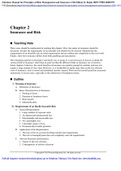Exam (elaborations)
solutions-manual-for-principles-of-risk-management-and-insurance-13th-edition-by-rejda-ibsn-9780134082578
- Course
- Nursing
- Institution
- Anderson University
solutions-manual-for-principles-of-risk-management-and-insurance-13th-edition-by-rejda-ibsn-2578 solutions-manual-for-principles-of-risk-management-and-insurance-13th-edition-by-rejda-ibsn-2578 solutions-manual-for-principles-of-risk-management-and-insurance-13th-edition-by-rejda-ibsn-2578 solut...
[Show more]



